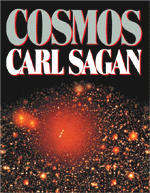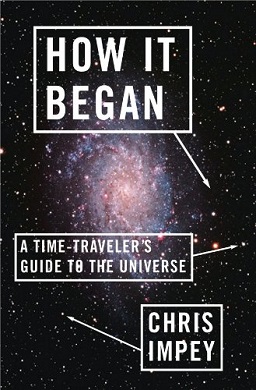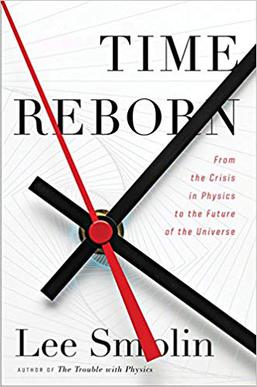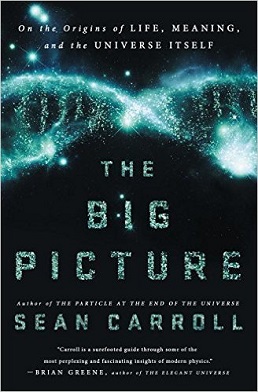
New Scientist is a popular science magazine covering all aspects of science and technology. Based in London, it publishes weekly English-language editions in the United Kingdom, the United States and Australia. An editorially separate organisation publishes a monthly Dutch-language edition. First published on 22 November 1956, New Scientist has been available in online form since 1996.

Physics World is the membership magazine of the Institute of Physics, one of the largest physical societies in the world. It is an international monthly magazine covering all areas of physics, pure and applied, and is aimed at physicists in research, industry, physics outreach, and education worldwide.

Cosmos is a popular science book written by astronomer and Pulitzer Prize-winning author Carl Sagan. It was published in 1980 as a companion piece to the PBS mini-series Cosmos: A Personal Voyage with which it was co-developed and intended to complement. Each of the book's 13 illustrated chapters corresponds to one of the 13 episodes of the television series. Just a few of the ideas explored in Cosmos include the history and mutual development of science and civilization, the nature of the Universe, human and robotic space exploration, the inner workings of the cell and the DNA that controls it, and the dangers and future implications of nuclear war. One of Sagan's main purposes for both the book and the television series was to explain complex scientific ideas in a way that anyone interested in learning can understand. Sagan also believed the television was one of the greatest teaching tools ever invented, so he wished to capitalize on his chance to educate the world. Spurred in part by the popularity of the TV series, Cosmos spent 50 weeks on the Publishers Weekly best-sellers list and 70 weeks on the New York Times Best Seller list to become the best-selling science book ever published at the time. In 1981, it received the Hugo Award for Best Non-Fiction Book. The unprecedented success of Cosmos ushered in a dramatic increase in visibility for science-themed literature. The success of the book also served to jumpstart Sagan's literary career. The sequel to Cosmos is Pale Blue Dot: A Vision of the Human Future in Space (1994).

Parallel Worlds: A Journey Through Creation, Higher Dimensions, and the Future of the Cosmos is a popular science book by Michio Kaku first published in 2004.

Nikki Tate is the pseudonym used by Canadian author, Nicole Tate-Stratton. She lives in Canmore, Alberta and is the founder of creative space Nexus Generation, the home of Writers on Fire, an online writing community where she mentors and supports members in developing their writing skills and how to share their stories and poems on a variety of platforms.

Satellite Science Fiction was an American science-fiction magazine published from October 1956 to April 1959 by Leo Margulies' Renown Publications. Initially, Satellite was digest-sized and ran a full-length novel in each issue with a handful of short stories accompanying it. The policy was intended to help it compete against paperbacks, which were taking a growing share of the market. Sam Merwin edited the first two issues; Margulies took over when Merwin left, and then hired Frank Belknap Long for the February 1959 issue. That issue saw the format change to letter size, in the hope that the magazine would be more prominent on newsstands. The experiment was a failure and Margulies closed the magazine when the sales figures came in.
Brad Parks is an American author of mystery novels and thrillers. He is the winner of the 2010 and 2014 Shamus Award, the 2010 Nero Award and the 2013 and 2014 Lefty Award. He is the only author to have won all three of those awards. He writes both standalone domestic suspense novels and a series featuring investigative reporter Carter Ross, who covers crime for a fictional newspaper The Newark Eagle-Examiner, based in Newark, New Jersey. His novels are known for mixing humor with the gritty realism of their urban setting. Library Journal has called him "a gifted storyteller ."

The 4 Percent Universe: Dark Matter, Dark Energy, and the Race to Discover the Rest of Reality is a nonfiction book by writer and professor Richard Panek and published by Houghton Mifflin Harcourt on January 10, 2011.

How It Began: A Time Traveler's Guide to the Universe is a non-fiction book by the astronomer Chris Impey that discusses the history of the universe, with chapters ranging from the proximate universe to within an iota of the Big Bang. It was published as a hardcover by W. W. Norton & Company in 2012 and as a paperback in 2013. It is actually the prequel to his 2010 book How it Ends: From You to the Universe, which talks about how everything, from individual humans, to the human species, to the Earth, and finally, the universe, might one day end in the future.

Time Reborn: From the Crisis in Physics to the Future of the Universe is a 2013 book by the American theoretical physicist Lee Smolin.

Eric Holthaus is a meteorologist and climate journalist. He is the founder of a weather service called Currently and started a publication called The Phoenix on Ghost. He was formerly a writer for The Correspondent, Grist, Slate and The Wall Street Journal and is known for his mentions of global climate change.
David Auerbach is an American writer and former Microsoft and Google software engineer. He has written on a variety of subjects, including social issues and popular culture, the environment, computer games, philosophy and literature. His 2018 book Bitwise: A Life in Code was well received, and chosen by Popular Mechanics as one of its 30 "Best Sci/Tech Books of 2018".

Gardner Soule was an American writer known for his books on cryptozoology and marine life.

Astrophysics for People in a Hurry is a 2017 popular science book by Neil deGrasse Tyson, centering around a number of basic questions about the universe. Published on May 2, 2017, by W. W. Norton & Company, the book is a collection of Tyson's essays that appeared in Natural History magazine at various times from 1997 to 2007.

The Big Picture: On the Origins of Life, Meaning, and the Universe Itself is a non-fiction book by American theoretical physicist Sean M. Carroll. The book was published on May 10, 2016, by Dutton. In his fourth book, Carroll defends the argument that the universe can be completely interpreted by science, introducing "poetic naturalism" as a philosophy that explains the world.
Richard Panek is an American popular science writer, columnist, and journalist who specializes in the topics of space, the universe, and gravity. He has published several books and has written articles for a number of news outlets and scientific organizations, including Scientific American, WIRED, New Scientist, and Discover.

The Autistic Brain: Thinking Across the Spectrum is a 2013 nonfiction popular science book written by Temple Grandin and Richard Panek and published by Houghton Mifflin Harcourt. It discusses Grandin's life experiences as a person with autism from the early days of scientific research on the topic and how advances in technology have revolutionized the understanding of autism and its connection to the brain.

Fundamentals: Ten Keys to Reality (2021) is a popular science book about advanced physics by Nobel laureate Frank Wilczek.
Mara Rockliff is an American author of children's books specializing in works based on true stories. Her book Mesmerized: How Ben Franklin Solved a Mystery that Baffled All of France won an Orbis Pictus Honor from the National Council of Teachers of English. The American Library Association selected her book Sweet Justice: Georgia Gilmore and the Montgomery Bus Boycott for a Sibert Honor. She also received the Golden Kite Award for Me and Momma and Big John.

What We Cannot Know: Explorations at the Edge of Knowledge is a 2016 popular science book by the British mathematician Marcus du Sautoy. He poses questions from science and mathematics and attempts to identify whether they are known, currently unknown or may be impossible to ever know.
















